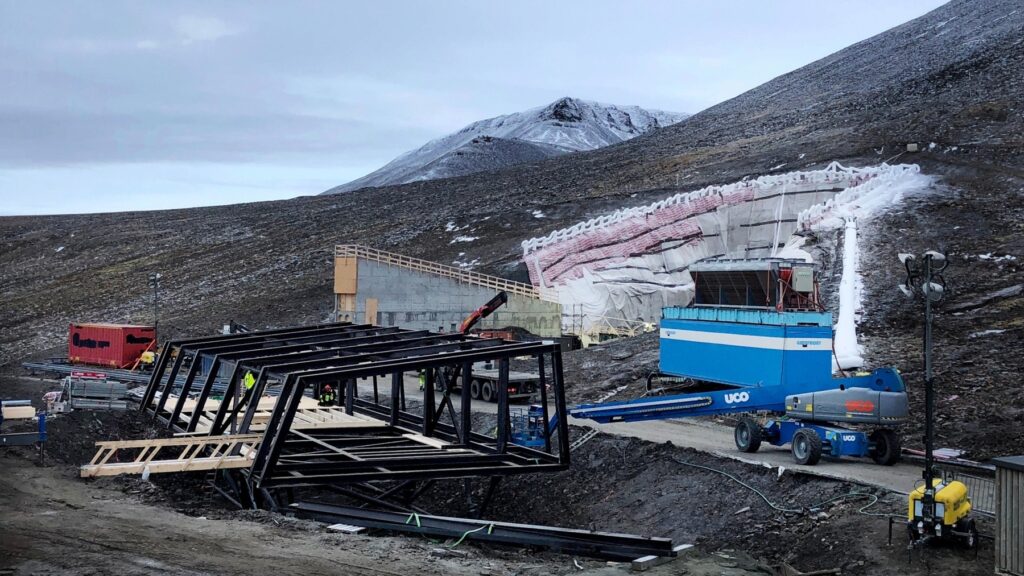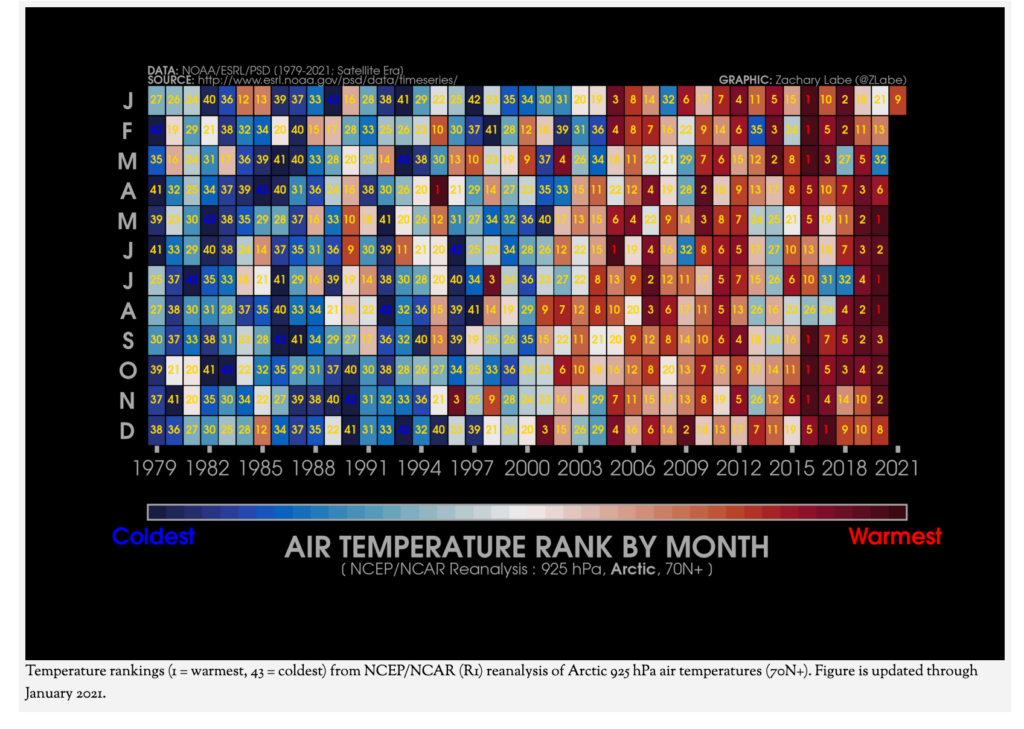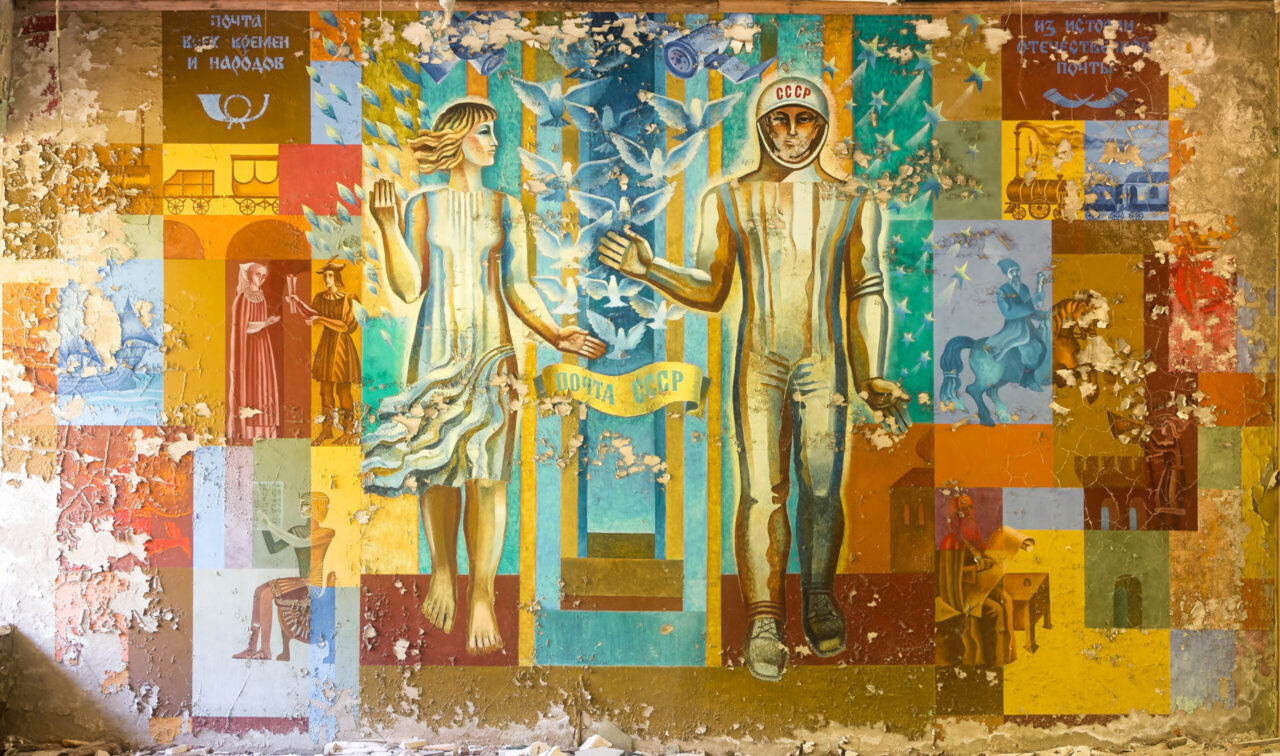
This is probably similar to other photos you’ve seen of the Global Seed Vault on Svalbard
The grey superstructure is most often surrounded in pictures and video by snow. Sometimes it stands under a fiery and very decorative Aurora Borealis. The vault was created as a safe storage site for the world’s seeds. Planning for the seed vault began in the 1980s and the structure was inaugurated in 2008. It has the capacity to store the seeds of 4.5 million plants. The vault has received considerable coverage in global media. Svalbard was chosen because it is remote and cold, the assumption being that the seeds would be safe there. Unfortunately, the Arctic is undergoing an extreme heating event, due to global warming.
The image below is not from the construction phase, which ended in 2008. It shows the repair effort ten years later. The grey structure with the familiar shape is not the vault. That is the entrance to the complex, taking you to a tunnel that leads you into the mountain, to the chambers of the vault proper. The repairs meant completely replacing this tunnel. They also had to enhance the refrigeration capacity of the installation, due to the jump in average temperatures for the archipelago.
In meteorological terms, Svalbard used to be “an Arctic desert”, there was little precipitation and it rarely came down as rain. The site can no longer function as the “Doomsday Vault” it has been called in the international media. Over the past forty years, the Arctic has undergone accelerated heating, and Svalbard is no longer an Arctic desert. There are occasional periods of constant rain in mid-winter. What used to be solid permafrost, that you could set buildings on, has turned into wet sludge. Structures sink into the ground. Never before experienced avalanches killed people. Rain and flooding are now threats one must guard against.

Policy makers without connection to reality
The failure of the Global Seed Vault illustrates the disconnect between our policy makers and the reality of climate change. According to the Encyclopaedia Britannica, the vault is intended to safeguard the seeds of the world’s food plants in the event of a global crisis. The goal was to create a place of safe storage for the seeds of the world, built to withstand a range of possible crises. The hope was that in the case of a crisis, the vault would keep safe for decades, without intervention or an external energy supply. The location was chosen for an obvious reason—seeds are best preserved in cold storage and the Arctic is cold, right? Well, it had been cold up to the 1980s, when plans for the vault were first made, but regional warming was already taking place. Yet, the planners looked to the past, not to the future climate scientists were warning about.
In the 1990s, scientists were not in doubt: global warming will accelerate, unless we reduce CO2-emissions. At the same time, the fossil fuel industry began mobilizing against climate science. Those who thought the Arctic would be a permanent cold-storage-box for a seed vault, may have listened to the manufactured uncertainty the oil companies began spreading.
From dry Arctic Desert to a hot and wet disaster area
What was supposed to be a self-operating cold-storage-box for seeds proved no such thing. The permafrost on Svalbard is thawing. Average temperatures in mid-winter have been as high as 14ºC above normal. As a consequence, work is underway to move almost 200 buildings. They are no longer on safe ground, some having been built too close to hills that now release avalanches. Flooding, due to extreme rainstorms, is compounding the issue. Houses on Svalbard traditionally had no rain gutters, they simply weren’t needed. Now, you need them to lead water away from thawing foundations.
The rescue and repair mission undertaken by Statsbygg, the company which built the Seed Vault, is a catalogue of despair. Take a look at the photograph. The blue container is a refrigeration unit keeping the vault cold during the repair work. The white on the tube leading to the vault is man-made frost. The new tunnel will have artificial temperature regulation, to keep it below freezing. In October 2016, there was a flooding event after a period of prolonged rains, with water entering the 100 meters long tunnel. The repair effort seeks to avoid this happening again. During repairs, a representative of Statsbygg said something I will never forget: “We are quite simply starting up the Permafrost.”
No shortage of hubris
No, they are not. To do so, humanity needs to take at least 70ppm of CO2 out of the atmosphere. We are adding CO2 and permafrost will not be started up. The black steel beam structure in the foreground houses a new machine room. Its generators will keep refrigeration units going, in order to ensure that the vault maintains a low enough temperature. The goal is to have the man-made cold inside the vault freezing the surrounding mountain. Should a catastrophe occur, which interrupts the energy supply to the diesel-generators, then the hope is that the colder surrounding mountain will maintain the vault at a temperature that helps keep the stored seeds intact.
This is worth thinking about. The Arctic was supposed to keep the Global Seed Vault cold, without an external energy supply, in the event of a shut-down. We now have to artificially keep the Arctic cold, with an external energy supply, “starting up the Permafrost”.
The largest regional heat explosion in recorded history
In 1979, satellites began measuring temperatures in the Arctic. We have a solid record over time of what’s happened in the region. We can confirm that the Arctic is the region of the world where the global warming effect is most intense. In fact, we can claim that the “cold-storage-box” for the Northern Hemisphere has been shut down. The Arctic is now a cauldron in turmoil. Heat energies have gone from predictable phase-changes to unpredictable flux. And our policy makers pretend this is not happening, and continue making decisions as bad as the one which placed the Global Seed Vault in the Arctic. When asked, the policy makers responsible are now pretending that the Global Seed Vault is operating as it should be.
Here’s a chart that Zack Labe keeps updating, as monthly satellite data are certified. It shows you the temperature evolution above 70oNorth, from January 1979 until January of 2021. What you are looking at is a slow motion thermal event of incredible magnitude, It is the largest regional heat-shift event in recorded meteorological history. Unfortunately, it’s happened relatively slowly and we get used to “new normals” far outside any acceptable range.

Policy makers consistently ignore the science, if it interferes with economic objectives
Our Earth System is undergoing catastrophic breakdown. To have any hopes of repairing it, we must ensure that efforts correctly assess the available science. This is not as easy as it sounds, but there was absolutely no need for the problems that struck the Global Seed Vault. We had the scientific knowledge required to make better decisions. Regrettably, the nation in charge of the effort is an oil and gas producing nation in denial about its contribution to climate change. Norway paid for the Global Seed Vault in order to try and distract the world from the significant contribution to global warming its oil industry is responsible for.
This is a sad sequence of events, that should be a source of despair. It is emblematic of the plight of our time. We scurry about, attempting to counter the consequences of accelerated global warming, resource depletion and biodiversity loss. Too late, we realize that we are contributing to the damage, because we allowed our prejudices or short-term economic ambitions to drown out reality, as presented by available scientific findings.
Credit for Arctic Temperatures graphic: Zachary Labe, 2021
For more information.
URL to top photo of Global Seed Vault

